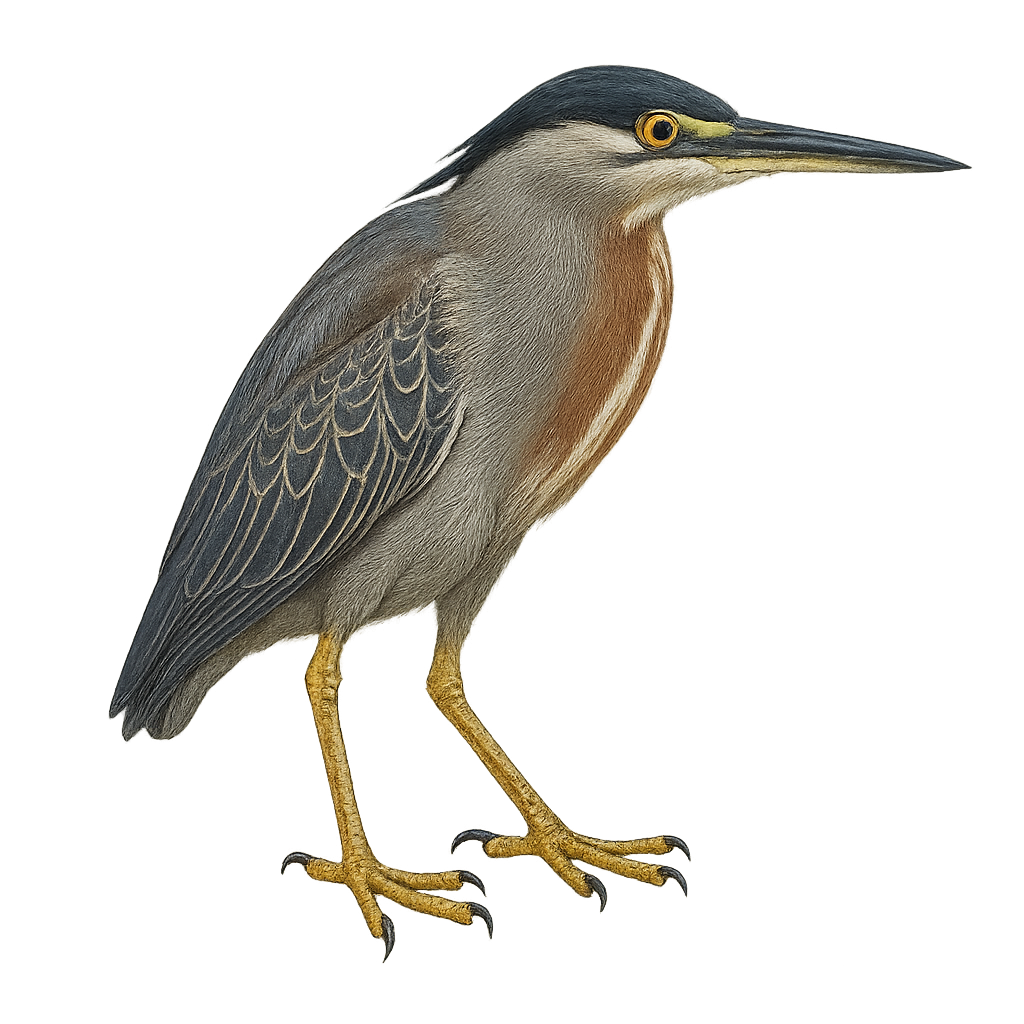Your wildlife photography guide.
Explore the striated heron in detail, study its behavior, prepare your shots.
Where to observe and photograph the striated heron in the wild
Learn where and when to spot the striated heron in the wild, how to identify the species based on distinctive features, and what natural environments it inhabits. The WildlifePhotographer app offers tailored photography tips that reflect the striated heron’s behavior, helping you capture better wildlife images. Explore the full species profile for key information including description, habitat, active periods, and approach techniques.
Striated Heron
Scientific name: Butorides striata

IUCN Status: Least Concern
Family: ARDEIDAE
Group: Birds
Sensitivity to human approach: Suspicious
Minimum approach distance: 10 m
Courtship display: September to March
Incubation: 19-21 jours
Hatchings: September to April
Habitat:
Mangroves, marshes, rivers
Activity period :
Primarily active during the day, with peak activity in the morning and late afternoon.
Identification and description:
The Striated Heron, or Butorides striata, is a small heron with predominantly grey-green plumage, a black cap, and yellow legs. It is often seen in wetlands, mangroves, and along rivers. This heron is an opportunistic feeder, primarily consuming fish, insects, and small crustaceans. It employs a unique hunting technique, remaining still before quickly striking its prey. Although generally solitary, it can sometimes be seen in small groups. Its ability to adapt to various aquatic habitats allows it to inhabit a wide range of geographical regions, from tropical to temperate areas.
Recommended lens:
400 mm – adjust based on distance, desired framing (portrait or habitat), and approach conditions.
Photography tips:
To photograph the Striated Heron, it's advisable to use a telephoto lens of at least 400mm to capture detailed images without disturbing the bird. Look for areas where it is active, such as mangroves or riverbanks, and be patient. Early morning or late afternoon provides soft light ideal for photography. Use a tripod to stabilize your camera and wait for the heron to adopt an interesting posture or hunt to get dynamic shots.
The WildlifePhotographer App is coming soon!
Be the first to explore the best nature spots, track rutting seasons, log your observations, and observe more wildlife.
Already 1 432 wildlife lovers subscribed worldwide

